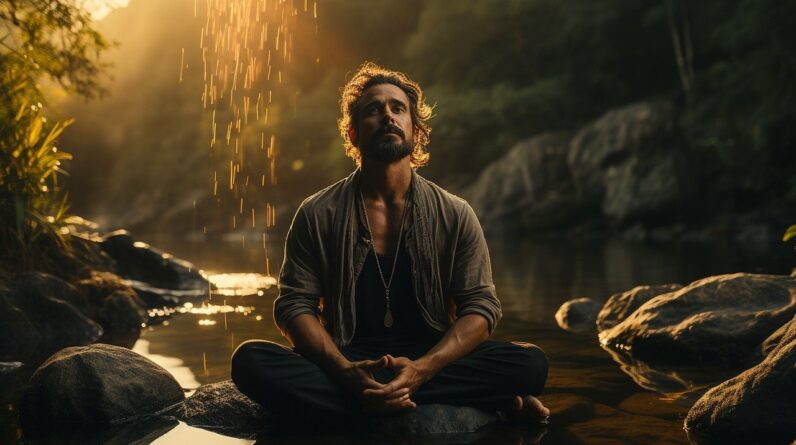Are you a solo traveler in search of a rejuvenating getaway? The question of whether wellness retreats are suitable for those traveling alone has been buzzing in the travel community. These immersive experiences offer a unique opportunity to prioritize your well-being while exploring new destinations. But are they truly inclusive and fulfilling for the wandering souls who embark on solo adventures? Let’s find out!
Factors to Consider
When considering a wellness retreat as a solo traveler, there are several factors that you should take into account. These factors will help you determine the best retreat for your needs and ensure a rewarding experience.
Type of Retreat
The first factor to consider is the type of retreat you are interested in. There are various types of wellness retreats available, such as yoga and meditation retreats, detox retreats, spa retreats, and more. Think about your interests, goals, and what you hope to achieve from the retreat. For example, if you are looking to relax and rejuvenate, a spa retreat might be the best option for you. On the other hand, if you want to focus on your mental well-being, a meditation retreat might be more suited to your needs.
Location
The location of the retreat is another crucial factor to consider. Do you prefer a tropical beach setting or a peaceful mountain retreat? The setting can greatly impact your overall experience and the level of relaxation you can achieve. Keep in mind factors such as climate, accessibility, and suitability to your preferences. Additionally, consider whether you would like to be surrounded by nature or prefer a retreat located in a bustling city.
Duration
The duration of the retreat is an important consideration. Some wellness retreats offer weekend getaways, while others span several weeks. Think about how much time you can dedicate to the retreat and what fits into your schedule. Consider the time it takes to truly unwind and immerse yourself in the experience. Longer retreats may allow for a deeper transformation and a more significant impact on your overall well-being.
Budget
Your budget is a crucial factor when selecting a wellness retreat. Retreats can vary greatly in price, depending on factors such as location, accommodation, and included activities. Set a realistic budget and ensure that the retreat you choose falls within your financial capabilities. Consider any additional costs, such as transportation, meals, and optional activities. It’s important to find a balance between affordability and the value you will receive from the retreat.
Activities and Programs
Finally, consider the specific activities and programs offered at the retreat. Look for a retreat that aligns with your interests and goals. If you are interested in yoga, find a retreat that offers daily yoga classes. If you want to learn new meditation techniques, look for a retreat that provides meditation workshops. The more the retreat offers activities that resonate with you, the more enriching and fulfilling your experience will be.
Advantages of Solo Traveling to Wellness Retreats
While embarking on a wellness retreat as a solo traveler may seem daunting, it offers numerous advantages that can enhance your overall experience and well-being.
Freedom and Flexibility
One of the greatest advantages of traveling solo to a wellness retreat is the freedom and flexibility you have in creating your daily schedule. As a solo traveler, you have the autonomy to choose which activities and programs you want to participate in. You can wake up early for a morning meditation session or sleep in and start your day at your own pace. This freedom allows you to tailor the retreat to your specific needs and preferences.
Personal Growth and Reflection
Solo travel to a wellness retreat offers a unique opportunity for personal growth and reflection. Without the distractions and responsibilities of everyday life, you can fully focus on yourself and your well-being. The solitude and tranquility of the retreat environment provide the perfect space for self-reflection, self-discovery, and personal development. You can take the time to delve deep into your thoughts, emotions, and aspirations, ultimately leading to a greater understanding of yourself.
Opportunity for Self-Care
Solo travel to a wellness retreat is an excellent opportunity to prioritize self-care. You are solely responsible for your well-being and can dedicate ample time to self-care activities. Whether it’s indulging in spa treatments, practicing meditation, or engaging in mindful exercises, you have the freedom to nurture your mind, body, and soul. This focus on self-care can help you recharge, reduce stress, and restore balance in your life.
Meeting Like-Minded People
Contrary to popular belief, solo travel does not necessarily mean loneliness. In fact, solo travelers are often more open to meeting new people and forming connections. Wellness retreats attract individuals with similar interests and mindsets, creating a community of like-minded people. By traveling alone to a retreat, you are more likely to engage in conversations with fellow participants and make lasting friendships. These connections can provide support, encouragement, and inspiration throughout your retreat and beyond.

Challenges of Solo Traveling to Wellness Retreats
While solo traveling to wellness retreats offers numerous advantages, there are also some challenges that can arise during the journey. Being aware of these challenges and preparing for them can help you navigate your retreat experience more smoothly.
Getting Out of Comfort Zone
Embarking on a wellness retreat as a solo traveler requires stepping out of your comfort zone. You might feel anxious or nervous about traveling alone or being surrounded by unfamiliar faces. However, pushing past these initial discomforts can lead to personal growth and a more fulfilling experience. Embrace the opportunity to challenge yourself, try new things, and expand your comfort zone. Remember that growth often happens outside of our comfort zones.
Dealing with Loneliness
Although meeting new people at a wellness retreat is one of the advantages, it is possible to experience moments of loneliness during your solo travel journey. It’s natural to miss the familiar presence of loved ones and your usual support network. However, it’s important to remember that periods of solitude can be enriching and provide the space for self-reflection. Engage in activities and conversations with fellow retreat participants to alleviate feelings of loneliness and foster connections.
Logistical Arrangements
Arranging the logistics of solo travel can be daunting for some. From booking flights and accommodation to transportation and meals, there are many factors to consider. It’s essential to plan and prepare for these logistical arrangements ahead of time to minimize stress and ensure a smooth transition. Research transportation options, check visa requirements, and familiarize yourself with the local customs and practices. Consider reaching out to the retreat staff for any guidance or assistance in making these arrangements.
Safety Concerns
Traveling alone to an unfamiliar destination can raise safety concerns for some solo travelers. It’s important to prioritize your safety and take necessary precautions. Research the safety reputation of the destination and follow any travel advisories. Ensure you have emergency contact numbers and share your itinerary with a trusted person back home. Stay aware of your surroundings and trust your intuition. By taking these precautions, you can mitigate potential safety risks and focus on enjoying your wellness retreat.
Choosing the Right Retreat
Now that you’ve considered the factors and advantages of solo traveling to wellness retreats, it’s time to choose the right retreat for your needs. This process requires careful research and consideration to ensure a rewarding and fulfilling experience.
Researching Retreats
Start by conducting thorough research on various wellness retreats that align with your interests and preferences. Look for retreats that offer the activities and programs you are looking for. Explore their websites, read through their itineraries, and gather as much information as possible. Pay attention to the retreat’s mission, values, and the experience they aim to provide. The more you know about each retreat, the better equipped you will be to make an informed decision.
Reading Reviews and Testimonials
Before making a final decision, read reviews and testimonials from previous retreat participants. Their experiences will provide insights into the retreat’s quality, effectiveness, and overall satisfaction. Look for reviews that reflect the aspects that are important to you, such as the quality of the instructors, the organization of the retreat, or the comfort of the accommodation. Reviews can offer valuable perspectives and help you gauge whether the retreat will meet your expectations.
Considering the Retreat’s Philosophy
Each retreat has its own unique philosophy and approach to wellness. Consider whether the retreat’s philosophy resonates with your beliefs and values. Some retreats may focus on holistic well-being, while others may have a specific spiritual or mindfulness approach. Reflect on your personal goals and find a retreat that aligns with your desired outcomes. By choosing a retreat with a philosophy that aligns with your values, you are more likely to have a meaningful and transformative experience.
Contacting the Retreat
After conducting your research and considering reviews, it’s a good idea to contact the retreat directly to clarify any questions or concerns you may have. Reach out to the retreat staff via phone or email and inquire about any specific details that are important to you. Ask about the retreat’s schedule, accommodation options, or dietary requirements. Engaging in direct communication with the retreat can also provide a glimpse of their customer service and the level of care they provide to their participants. This direct contact can help you determine whether the retreat is a good fit for your needs.

Preparation for Solo Travel
Now that you have chosen the right retreat, it’s time to prepare for your solo travel experience. Proper planning and preparation will help ensure a smooth journey and allow you to make the most of your retreat.
Planning and Booking in Advance
Once you have finalized your retreat choice, start planning and booking your trip in advance. This includes booking flights, accommodation, and any transportation necessary. Flights and accommodations tend to get more expensive as the travel date approaches, so booking in advance can save you money. Create a checklist of all the necessary bookings and check them off as you complete each task. By taking care of the logistical details early on, you can alleviate stress and focus more on preparing for the retreat itself.
Packing Essentials
Pack strategically by considering the climate and activities of the retreat location. Pack comfortable clothing suitable for physical activities, such as yoga or hiking, as well as attire for relaxation and leisure. Don’t forget essential items such as toiletries, sunscreen, and any necessary medications. If you have any specific dietary requirements or preferences, consider packing snacks or supplements that can support your dietary needs. Additionally, pack a journal or notebook along with any personal items that bring you comfort or joy.
Travel Insurance
Obtaining travel insurance is highly recommended when embarking on a wellness retreat as a solo traveler. Travel insurance provides coverage for unexpected incidents such as trip cancellations, medical emergencies, or lost luggage. It offers peace of mind knowing that you are protected in case of any unforeseen circumstances. Research different travel insurance options and choose a plan that provides comprehensive coverage for your needs. Carry a copy of your insurance policy and emergency contact details with you during your travel.
Informing Loved Ones
Prior to your departure, inform your loved ones about your travel plans. Share your itinerary, including the dates and locations of your retreat. Provide them with emergency contact information for the retreat and any additional contact details they may need. Let them know that you will be away and reassure them of your safety precautions. Regularly update them on your progress and stay in touch as much as possible to alleviate any concerns they may have.
Learning Basic Phrases
If you are traveling to a destination where English may not be widely spoken, consider learning basic phrases in the local language. Being able to communicate simple greetings, directions, and essential phrases can greatly enhance your travel experience. It shows respect to the local culture and can help you navigate your surroundings more effectively. There are numerous language learning apps and online resources available to assist you in learning basic phrases before your trip. Even knowing a few key phrases can go a long way in creating connections and fostering meaningful interactions during your retreat.
Solo Travel Tips for Wellness Retreats
As you embark on your journey to a wellness retreat as a solo traveler, keep these tips in mind for a fulfilling and enjoyable experience.
Embrace Independence and Alone Time
Solo travel offers the opportunity to embrace independence and enjoy alone time. Embrace this freedom and use it as an opportunity to reconnect with yourself and your inner thoughts. Engage in activities that you enjoy and take advantage of the solitude to reflect and recharge. Embracing independence allows you to discover new aspects of yourself and fully immerse in the retreat experience.
Participate Actively in Activities
To make the most of your wellness retreat, actively participate in the offered activities and programs. Challenge yourself to try new things, even if they are outside of your comfort zone. Engaging fully in the activities will help you maximize the benefits of the retreat and create lasting memories. Be open to exploring different practices and techniques, and allow yourself to be fully present in the moment.
Engage in Conversations with Others
While solo travel allows for independence, it does not mean you have to be alone all the time. Take this opportunity to engage in conversations with fellow retreat participants. Listening to others’ experiences and sharing your own can foster connections and offer perspectives you may not have considered. Engaging in conversations can also alleviate any feelings of loneliness and provide a support network throughout your retreat.
Practice Self-Care
Prioritize self-care throughout your wellness retreat journey. Take care of your physical, mental, and emotional well-being by engaging in activities that nurture your body and soul. Make time for rest, relaxation, and rejuvenation. Practice mindfulness, meditation, or any other self-care techniques that resonate with you. By making self-care a priority, you can enhance your overall retreat experience and return home feeling refreshed and revitalized.
Be Open to New Experiences
Approach your wellness retreat with an open mind and be willing to embrace new experiences. Allow yourself to step outside of your comfort zone and try activities or therapies that you may not have considered before. Be open to learning from the retreat staff and fellow participants. By being receptive to new experiences, you open yourself up to personal growth and transformation.
Making the Most of Solo Travel to Wellness Retreats
Your solo travel to a wellness retreat offers a unique opportunity for personal growth and self-discovery. Here are some tips to help you make the most of your retreat experience.
Set Your Intentions
Before embarking on your wellness retreat, take the time to set your intentions. Clarify what you hope to achieve from the retreat and what you want to focus on during your time there. Whether it’s finding inner peace, improving your overall well-being, or gaining new perspectives, setting your intentions can give direction to your retreat experience. Keep your intentions in mind throughout your journey and use them as a guide during your activities and interactions.
Disconnect from Technology
To fully immerse yourself in the retreat experience, disconnect from technology as much as possible. Limit your time spent on smartphones, laptops, and social media. Instead, focus on the present moment and connect with yourself and your surroundings. Give yourself the gift of uninterrupted time and space to fully engage in the retreat activities and foster meaningful connections with others.
Stay Mindful and Present
Practice mindfulness throughout your retreat journey. Be fully present in each moment, whether it’s during a yoga session, a nature walk, or a meditation practice. Pay attention to your thoughts, emotions, and sensations without judgment. Stay connected to your breath and the present moment. By practicing mindfulness, you can deepen your experience and cultivate a sense of calm and clarity.
Journaling and Reflection
Take the time to journal and reflect on your retreat experience. Writing down your thoughts, emotions, and insights can help solidify your learnings and provide a record of your personal growth. Journaling allows for self-expression and can serve as a valuable tool for self-discovery. Set aside a few moments each day to reflect on your experiences and write down any significant observations or breakthroughs.
Try Different Therapies and Practices
Be open to trying different therapies and practices offered at the retreat. Experimentation can lead to new discoveries and provide insights into what techniques resonate with you. Whether it’s a sound healing session, a massage, or a holistic therapy, take advantage of the diverse range of offerings available to you. Trying different therapies and practices can help broaden your perspective and introduce you to new tools for ongoing self-care beyond the retreat.
Creating Connections at Wellness Retreats
Part of the allure of wellness retreats is the opportunity to connect with like-minded individuals and form meaningful relationships. Here are some ways to create connections during your retreat.
Group Activities and Workshops
Participate actively in group activities and workshops offered at the retreat. Engage in discussions, share your thoughts, and listen to others. Collaborative activities provide a platform to connect with fellow retreat participants, share experiences, and gain new insights. By actively participating in group activities, you foster a sense of community and create opportunities for interaction.
Shared Meals
Mealtimes at a wellness retreat offer an excellent opportunity to connect with others. Sit with different people during mealtimes and strike up conversations. Share your experiences and listen to others’ stories. Mealtimes can be a time of bonding and camaraderie, where you can learn from each other and build lasting connections.
One-on-One Sessions with Experts
If your retreat offers one-on-one sessions with experts, take advantage of these opportunities. These individual sessions provide a more personalized experience and create a safe space for deeper conversations. Engage openly with the experts, ask questions, and seek guidance. These sessions can provide valuable insights and support your personal growth journey.
Join Online Communities
Consider joining online communities or forums dedicated to wellness retreats. These communities connect individuals who have attended past retreats or are planning future ones. Engaging in online discussions and sharing your retreat experiences can further enhance your connection to the retreat community. You can exchange tips, recommendations, and insights with like-minded individuals who share a passion for wellness retreats.
After Solo Travel
As your solo travel journey to a wellness retreat comes to an end, it’s important to reflect on your experience and incorporate the learnings into your daily life.
Reflecting on the Experience
Take the time to reflect on your wellness retreat experience once you return home. Reflecting allows you to process your learnings, emotions, and insights. Write about the highlights of your journey and the specific moments that impacted you the most. Consider how the retreat has influenced your perspective on well-being and what changes you would like to implement in your life moving forward.
Implementing Learnings into Daily Life
The true value of a wellness retreat lies in the ability to implement the learnings into your daily life. Identify the specific practices, techniques, or mindset shifts you would like to incorporate into your routine. It could be as simple as dedicating a few minutes each day to meditation or creating a self-care ritual. By integrating the retreat learnings into your daily life, you can experience long-lasting positive changes in your well-being.
Stay Connected with People Met at the Retreat
Stay connected with the people you met during your retreat. Foster the relationships you formed by maintaining communication through email, social media, or even planning future meet-ups. These connections can provide ongoing support and inspiration beyond the retreat experience. Share your progress and continue to learn from each other’s journeys. By staying connected, you can sustain the sense of community and continue to grow together.
Planning Future Retreats
Reflect on the impact of your wellness retreat experience and start planning future retreats. Consider what aspects of the retreat were most fulfilling and what areas you would like to explore further. Keep an eye out for new retreat opportunities and destinations that align with your interests and goals. By planning future retreats, you continue to invest in your personal well-being and allow for ongoing growth and self-discovery.
Conclusion
Solo travel to wellness retreats offers a unique opportunity for personal growth, self-care, and connection. By considering the factors, advantages, and challenges, you can make an informed decision about the right retreat for your needs. Preparation is key to ensuring a smooth journey, while embracing independence and actively participating in activities can enhance the retreat experience. Connect with others through group activities, shared meals, and one-on-one sessions. Reflect on your experience, implement learnings into your daily life, and stay connected with the retreat community. Solo travel to wellness retreats allows you to embark on a transformative journey and discover a deeper sense of well-being and self-discovery.






